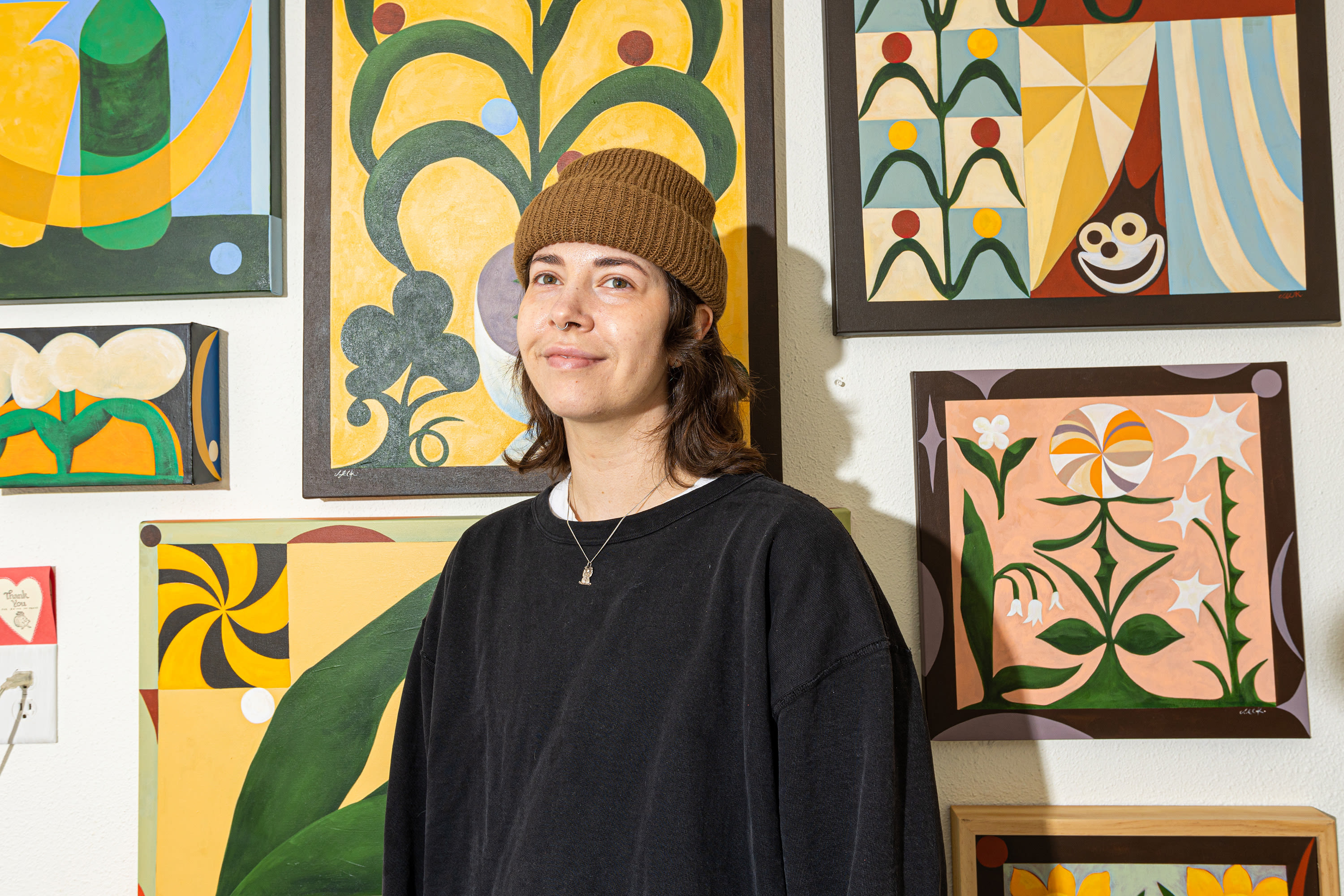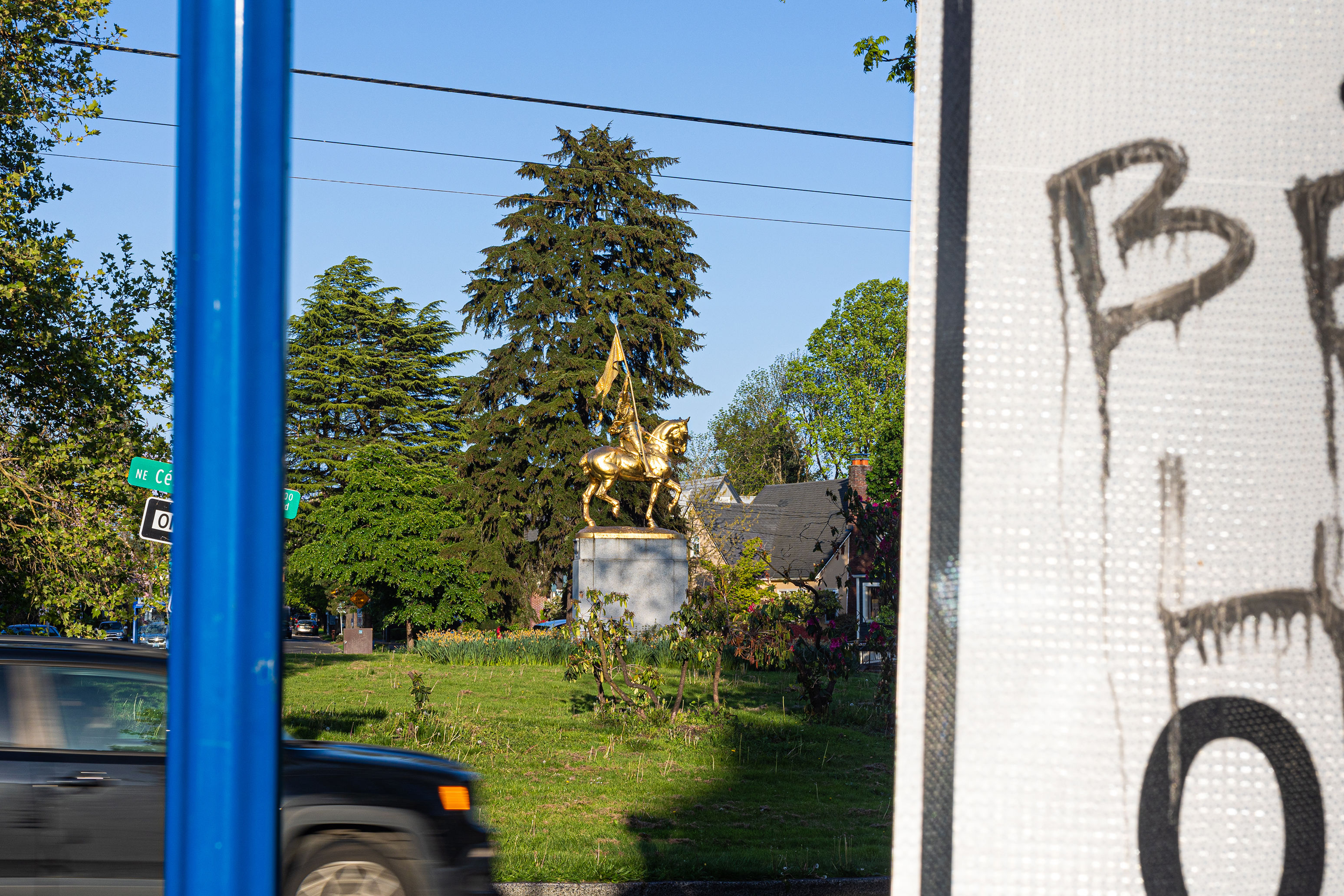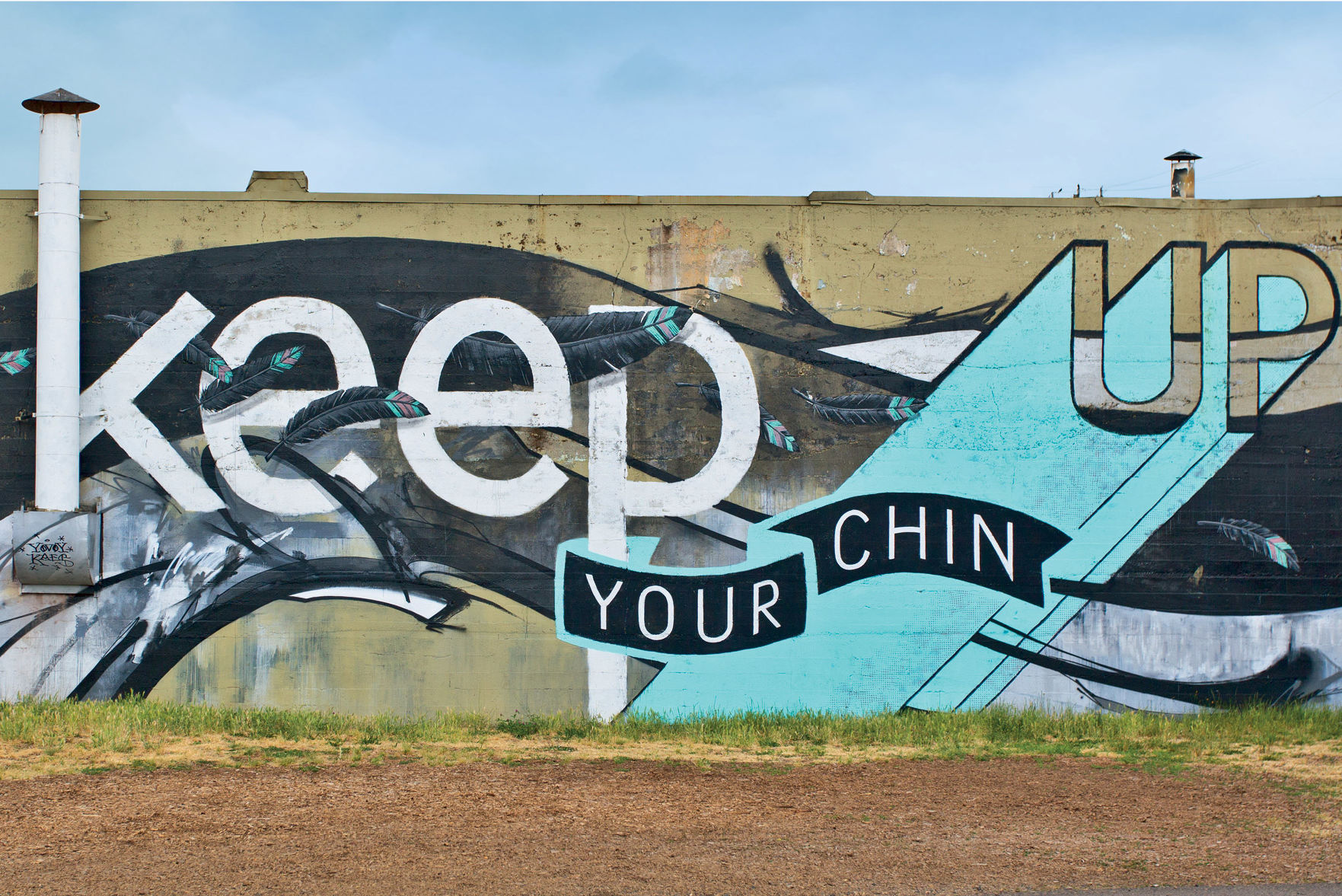
Portland's Colorful Mural Festival Is Changing the Face of the City
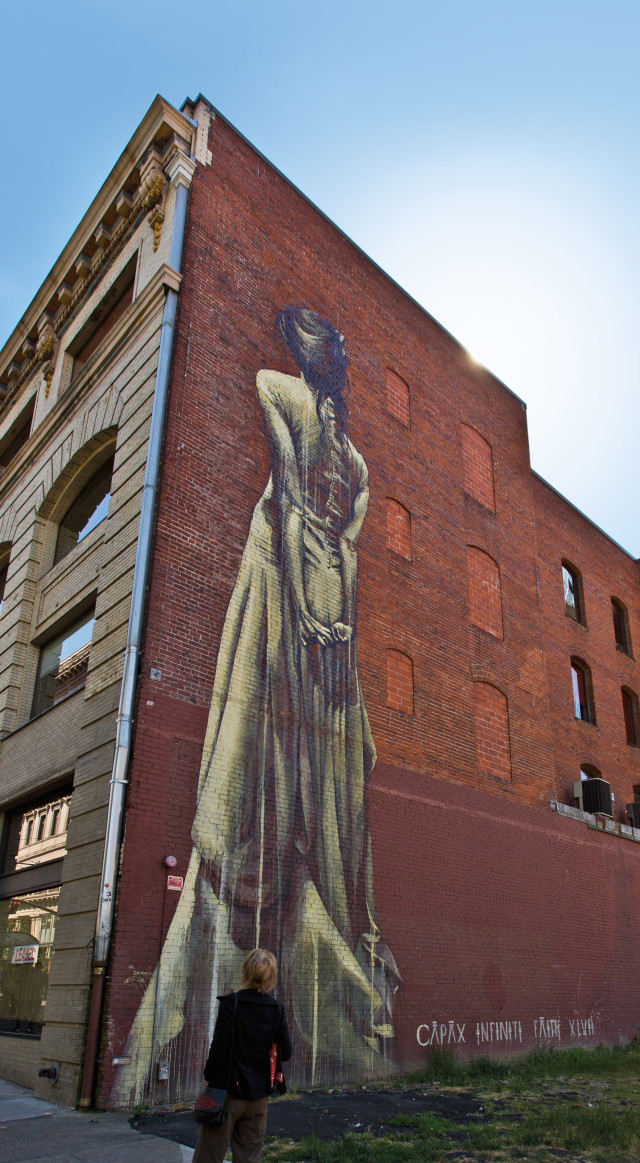
Image: Michael Novak
She stands with her back to the city, her fingers clasped behind her as her skirts trail the ground of an empty SW Washington Street lot. She is four stories tall.
Last year, the lady in question, created by the South African street artist Faith47, appeared on a redbrick wall downtown, one of about 35 murals added to the cityscape over the past two years. At least 15 more will materialize this month as Forest for the Trees, an annual event that orchestrates the creation of new murals, unleashes more than 30 artists across the city, the latest step in founder Gage Hamilton’s effort to make Portland’s streets reflect the city’s vaunted artistic scene.
“There’s a huge creative culture here,” says the local artist. “That’s what Portland is known for. That should be expressed visually.”
So Hamilton decided to galvanize local and international artists by finding them walls to paint and one week in August to paint them. Participating artists don’t get paid for their work, but FFTT secures the city permits and raises funds to pay for materials, equipment, and lodging.
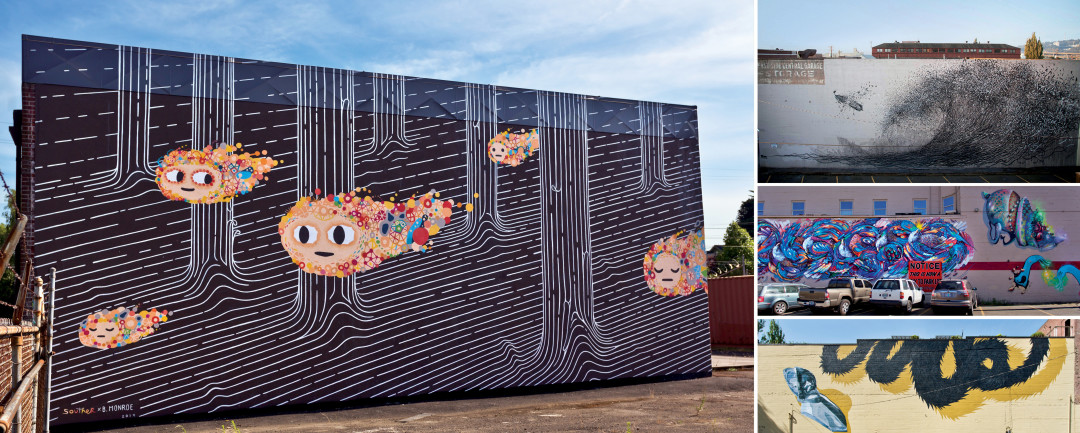
Image: Michael Novak
The result is a democratic art project that makes a gallery of the whole city, and is transforming its aesthetic landscape in the process. Visiting artists collaborate with local artists, anyone can witness the process, and participants are guaranteed a mass audience. The first two FFTT installments colored the city with arresting and eclectic work from internationally acclaimed artists, among them China-born South Africa resident DALeast and Philadelphia’s NoseGo.
And it’s all with official blessing: the Regional Arts and Culture Council gave its stamp of approval last year in the shape of a $15,000 grant. Such sanction is part of what distinguishes the FFTT work from “street art”—unauthorized visual art created in public spaces, often as a challenge to authority—though the artists involved acknowledge the debt they owe to that tradition.

Image: Michael Novak
“Street art comes out of desperation and some rebellion or anger against something, so if you have the city’s permission, it’s a very different thing,” says Souther Salazar, who painted in last year’s FFTT and gives a workshop at the Pacific Northwest College of Art as part of this year’s event. “Forest for the Trees is not street art. It’s artists working as muralists in a climate where street art has expanded the horizons of what it means to paint on a building.”
Salazar’s enthusiasm is clear. “I kept saying to people, ‘Do you realize how awesome this is?’” he recalls of last year. “How lucky that people raised all this money and got all these artists to come to Portland and went to all this trouble to get permits and now the city is full of murals where there weren’t any a week ago?”
As an artist, Salazar says working within the FFTT constraints was a challenge: how to make something visually strong with just one week to execute it? But he’s proud of the result—a collaborative piece where Oakland artist Brendan Monroe’s black-and-white treescape is brightened by Salazar’s wide-eyed, multicolored figures. The California-born artist is also proud of his adopted city for making Forest for the Trees happen. And if it makes people happy, so much the better.
“Ultimately I just wanted something that made everybody look up,” says Salazar, “and hopefully that would make them smile.”
So far, it seems, people are smiling at FFTT, though according to Hamilton, at least one person made his or her critique clear. “There’s been one mural from the first year that got damaged on Hawthorne, to the point where we couldn’t fix it,” he says. “Some idiot tagged it.”
